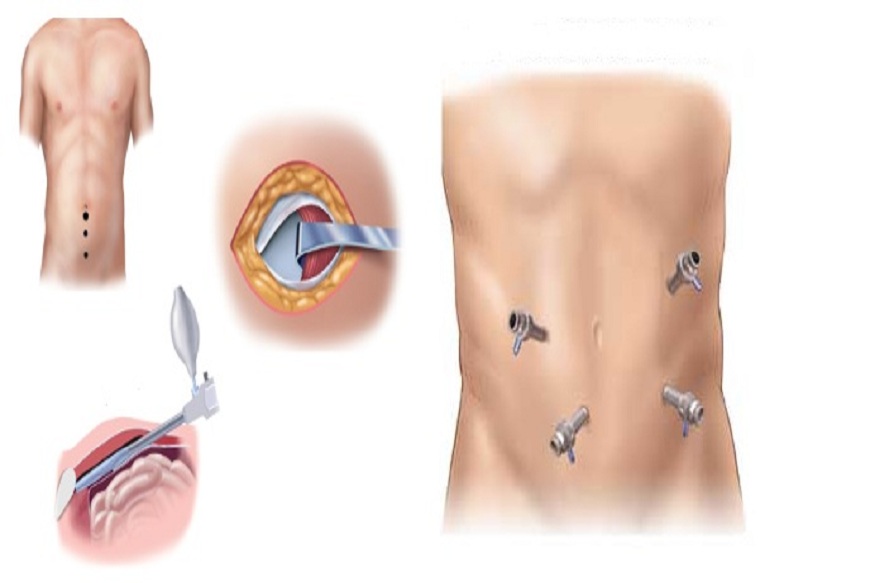
For a hernia to occur, two factors must be present: a significant weakening of the natural integumentary wall (muscles, fascia, or other anatomical structures) and an increase in intra-abdominal pressure (pregnancy, chronic constipation, intense physical labor). The most common hernias are inguinal, umbilical, white line, and femoral. which the patient feels as deep pain and a pulling sensation at the site of the hernia. There is usually also a lump that can be felt under the fingers. A hernia can also occur at the postoperative scar after abdominal or gynecological surgery, which occurs as a result of excessive and too rapid loading on the site after surgery or as a result of postoperative complications, such as infections of the postoperative wound and around the stoma.
Another serious problem is internal hernias: inter-loop hernias or hiatal hernias, where the natural opening in the diaphragm through which the esophagus passes from the chest to the abdominal cavity is significantly stretched, allowing the stomach to rise towards the chest, causing severe gastric discomfort.
If proper measures are not taken in hernia treatment , the patient may also begin to experience breathing problems and disturbances in the functioning of internal organs.
Types of hernia:
Inguinal hernias (2/3 of all hernias) are caused by fragments of abdominal organs exiting through the inguinal canal, which can even lead to the development of a scrotal hernia in men.
A hernia of the linea alba most often occurs during pregnancy or abdominal obesity. It is caused by significant relaxation of the tendon sheath of the rectus abdominis muscles. The operation is best performed during a reduction abdominoplasty (removal of the skin’s fatty fold), as the traces of the hernia repair are then invisible.
Hiatal hernia is the most common internal hernia. Laparoscopic treatment is the method of choice. The traditional, open method is technically very difficult and carries a huge risk of serious complications and a long recovery. The laparoscopic method, performed by an experienced specialist, minimizes the surgical risk and reduces the recovery period to several days.
Traditional methods of treating hernias
Traditional methods primarily include so-called open surgeries. During these, the surgeon incises the hernia site and then repairs the defect in the muscle wall or other covering causing the hernia to form.





